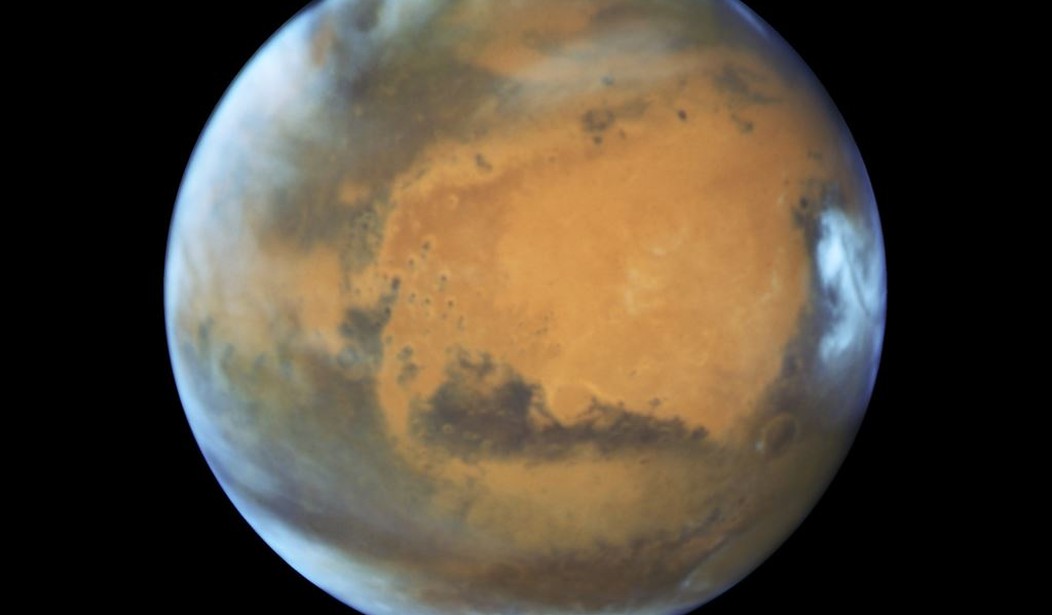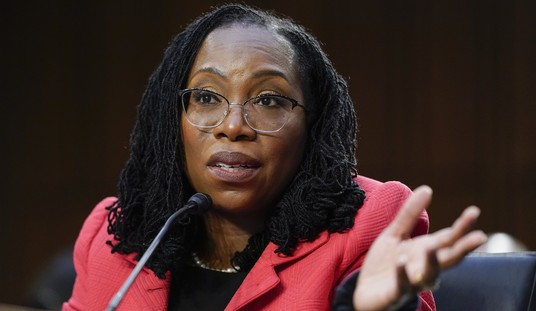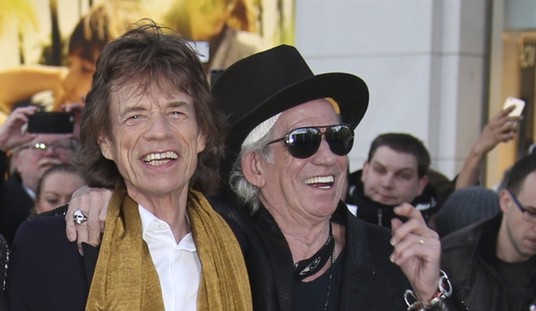The visuals of Elon Musk working on his fleet of spaceships to Mars while earth writhes in fear of the pandemic, global warming, and the Taliban takeover of Afghanistan gives off a When Worlds Collide vibe. That 1951 movie concerns the desperate efforts to build a space ark to transport a group of men and women to another planet to avoid the coming destruction of the Earth by a rogue star. The 21st-century effort is technologically more plausible.
It will take 1,000 spaceships and “a million tons” of vitamin C to make life on Mars sustainable, says SpaceX CEO Elon Musk. Otherwise “you’re going to die slowly and painfully.” That’s because in order to live on Mars, “we need to have a self-sustaining city” there, Musk recently told Ars Technica.
In the present case, the ships are made to bear us away from multiple disasters, for armageddon is undeniably on our minds. Perhaps it was the subconscious apocalyptic mood that put a recent story that an asteroid could hit earth in 200 years above the fold or drove a headline that a vaccine-resistant Lambda variant was wending its way north from South America. The end of the world has always exercised a fascination for people. “It is a very ancient pattern in human thought. It is rooted in ancient, even pre-biblical Middle Eastern myths of ultimate chaos and ultimate struggle between the forces of order and chaos,” says cultural historian Paul S. Boyer. No more so than now. The idea remains current today with the destroyer most commonly arriving in the form of climate change.
A computer program developed at MIT predicts that we will see the end of our civilization in 2040. We must expect the first catastrophes already in 2020.
According to the Australian spin-off of ABC News, “around 2020 […] the state of the planet will be very critical. If we do nothing to stop it, the quality of life will drop to zero. Pollution becomes so serious that it kills people, which in turn will weaken the population, lower than in the year 1900. In this phase, around 2040 to 2050, civilized life as we know it on this planet will end.
The recent coronavirus pandemic has spawned another end-of-the-world culprit: viruses. A journal preprint says, “The recent SARS-CoV-2 pandemic, which is causing COVID 19 disease, has taught us unexpected lessons about the dangers of human extinction through highly contagious and lethal diseases.”
UCL Genetics Institute Director Francois Balloux said, “As the pandemic has advanced, the mood of the public has become darker and more fearful and this has created a market for gloom and doom. It’s as bad as the effects of the super-optimism at the beginning – stay at home for two weeks, it’s a mild disease or wear a mask and it will be gone.” Finding a place to ride out the end of the world has become serious business. For those unable to wait for Mars, the popular alternative is a bunker in New Zealand.
“We don’t sell fear. We sell preparedness.” That’s the claim American bunker builder Rising S makes on its website, where it advertises “preparedness” as mini-compounds that can feature functioning kitchens, restrooms, solar-powered electricity and surveillance — starting from around $39,500 and running into the millions.
“Everybody wants their own personal touch to it, just like building a house,” said general manager Gary Lynch … This year alone, Lynch expects to sell around a dozen bunkers to New Zealand — which would double the firm’s total sales ever in the country, which have mainly been to American buyers.
Why is eschatology suddenly so big, not among the so-called crackpots beloved of leftist caricature, but among the tech-savvy millionaires and billionaires? Notre Dame theologian Jerry Walls gave NPR a personal perspective. “I remember – my grandfather was a country preacher – and I remember him talking about some of the things in the ‘Book of Revelation’ that were described there. He said he couldn’t understand how those things could possibly take place, but once technology came into existence – television, mass communication, modern weaponry and warfare – all of those things that just seemed so hard to conceive suddenly seemed plausible.”
Undoubtedly the optimism of the Reagan era has been eclipsed by the apparent second coming of Jimmy Carter. Joe Biden is facing simultaneous, seemingly insuperable challenges: the collapse of Afghanistan in place of a “decent interval”‘ the resurgence of the Covid Delta variant in place of the anticipated reopening of society; looming inflation, and economic problems in place of the anticipated boom and the unending border crisis. Something seems terribly wrong. It is as if nothing works anymore.
There’s fear in the air. Maybe it is time to head for a bunker.
The biggest criticism of the When Worlds Collide Mars settlement scheme is that it constitutes only physical escape from physical threats. If the seed of the End of the World is within man — breeding within our culture and secular ideology — then the devil will hitch a ride with us to the very limit of human habitation unless we open a second front. The idea that there is a parallel informational — or if you prefer, spiritual — war between the forces of life and destruction is very prominent in Judaeo-Christian eschatology. “The remnant is a recurring theme throughout the Hebrew and Christian Bible … The concept has stronger representation in the Hebrew Bible and Christian Old Testament than in the Christian New Testament.”
The influential Anglican “remnant theology” of Martin Thornton (1915–1986) sees the church parish as made up of three different levels of members. Thornton refers to the smallest of the groups as the Remnant, likening it to the remnant of Isaiah in the Old Testament. These are ordinary people of extraordinary devotion, more proficient than spiritually gifted, whom it is vital for the parish priest to identify and nurture through spiritual direction, for they are the dependable, beating, praying heart of the parish. They truly live their Christianity and form the core not just of the parish but of the universal “Church Militant”.
Basically, the remnant is that part of the human spiritual core that wins the evolutionary struggle with the devil and makes it to the finish line. The Judaic tradition is even stronger. It is the “just men,” not vast interplanetary distances, who stand between the world and destruction by the Enemy.
There is an old Jewish legend that every generation has 36 saints (lamedvavnikim) on whose piety the fate of the world depends. The Book of Proverbs provides an early source for the belief that the just man is the basis of the existence of the world: When the storm wind passes, the wicked is no more, but the righteous is an everlasting foundation. That is to say, that the righteous man holds up and supports the world just as the foundations of a building support it. … There are not less than 36 righteous men in every generation who receive the Shechina (the Divine presence).
It is probable that both the physical and spiritual aspects of survival are important. Informational survival is a surprising concept to find in the Old Testament, though perhaps not really so surprising. Musk’s arks must carry not only greed and the lust for power into the cosmos, but also the divine spark, obscured and unidentifiable though it may be, that was meant to win through to the end.
Books: Consciousness and the Universe: Quantum Physics, Evolution, Brain & Mind. Is consciousness an epiphenomenal happenstance of this particular universe? Or does the very concept of a universe depend upon its presence? Does consciousness merely perceive reality, or does reality depend upon it? Did consciousness simply emerge as an effect of evolution? Or was it, in some sense, always “out there” in the world?










Join the conversation as a VIP Member